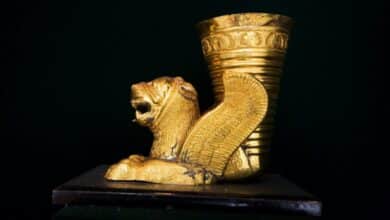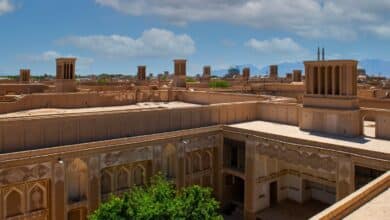Exploring Serene Darakeh: Tehran’s Picturesque Mountain Retreat
Visit this majestic hiking trail in north of Tehran
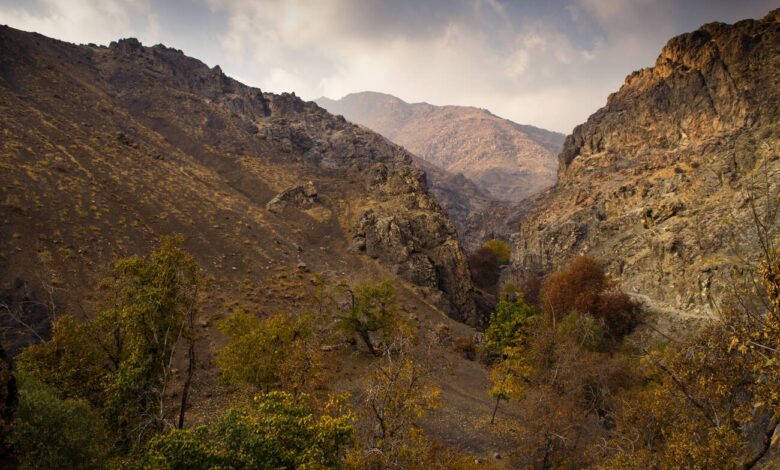
If you’re a fan of hiking and mountaineering, and you find joy in spending time in an area with refreshing weather, then Tehran has a perfect destination for you: Darakeh. Located in the northern part of Tehran, this mountainous region is located near the neighborhoods of Valiasr and Evin, providing a serene escape for Tehranis.
Darakeh is one of those places in Tehran that offers an unparalleled experience, making your visit truly refreshing. The soothing sound of the Darakeh River, combined with the exceptional climate, creates the perfect setting for a memorable day. If you’re looking to escape the hustle and bustle of Tehran on weekends, Darakeh is the ideal choice.
Contents
Where is Darakeh?
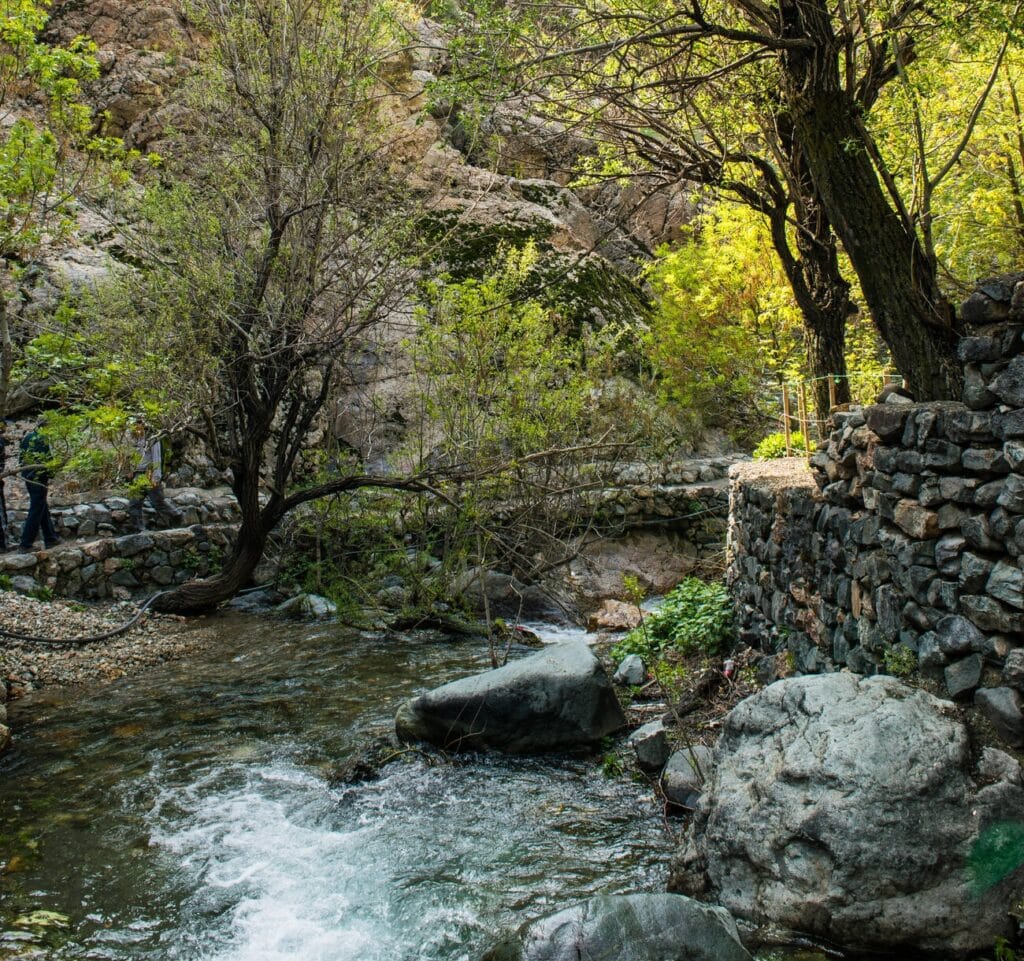
Darakeh is a charming highland in the northwest of Shemiranat, Tehran. Situated along a river of the same name, Darakeh boasts numerous attractions. It stretches from the northern side to the Tochal mountain range, to the south towards Evin neighborhood, east to Shahid Beheshti University lands, and west to Tochal Bazaar and Saadat Abad.
Access Routes to Darakeh
To reach Darakeh, you can use your private vehicle or opt for public transportation to this beautiful highland. There are three main routes to Darakeh by private car, and here are the detailed directions for each:
First Route: Enter Chamran Expressway, pass through Yemen and Rashid al-Din Fazlullah Streets, and then enter Davoodiyan Street to reach Darakeh.
Second Route: Enter Yadegar-e Imam Expressway, and at the end of this expressway, follow Evin Street to reach Darakeh.
Third Route: Approach Tajrish Square via Valiasr or Shariati Street, then reach Tajrish Square, and from there, enter Darakeh Street. Note: This route is not recommended due to frequent traffic.
Darakeh Trail
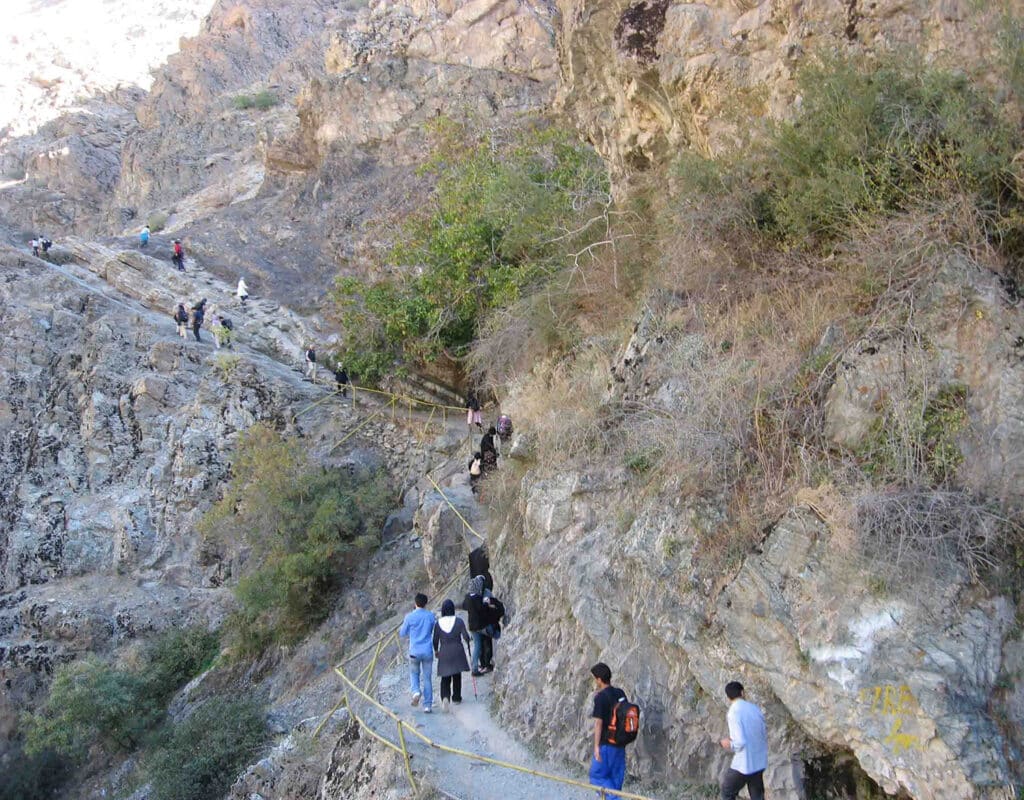
As mentioned, the main Darakeh trail involves some hiking and leads towards Palang Chal or Tochal Station Number Five. This 6-kilometer trail passes through the beautiful Darakeh Valley and Palang Chal, alongside the Darakeh River.
The trail has varying slopes, and for enhanced safety, protective railings are installed in certain sections. Overall, compared to other mountain trails in Tehran, this path is smoother and more accessible, suitable for enthusiasts of all ages.
The best time to go for the Darakeh adventure is early in the morning. This way, you can avoid the trail’s crowding, ensuring you have enough time to enjoy the natural beauty of this pleasant and weather-friendly area.
History of Darakeh
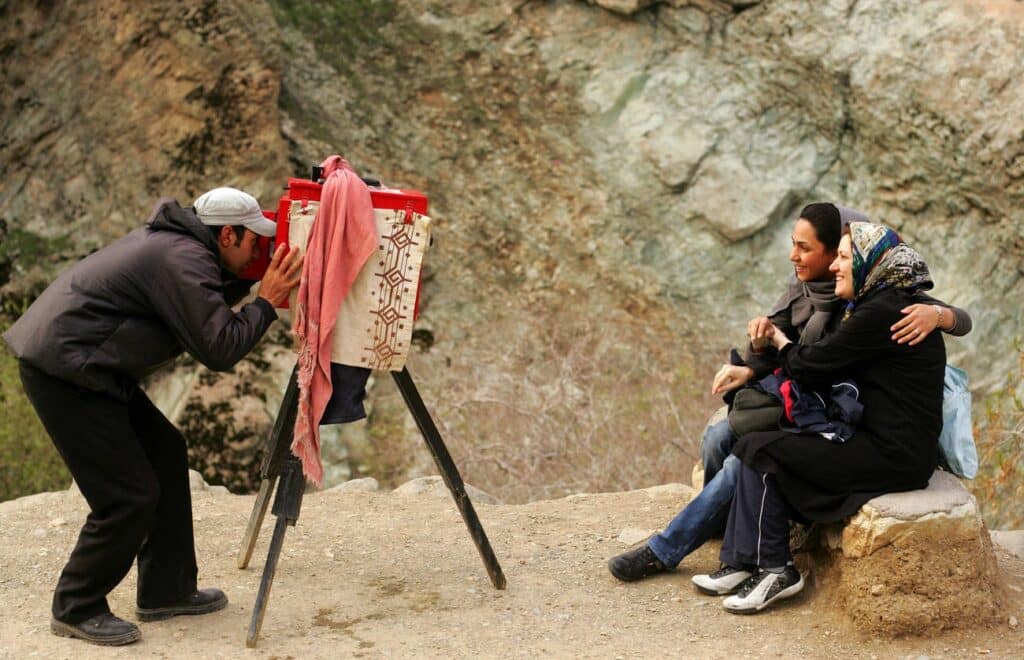
The mountainous valley of Darakeh has a history dating back around 800 years, roughly to the fifth century AH (Islamic calendar). The shrine of Seyyed Mohammad Vali, a descendant of Imam Sajjad (AS), is located in this neighborhood, and it is believed that all the Sayyids in the region are descendants of this shrine.
The presence of ancient stone mortars and stone ovens, discovered by the locals and still present in the shrine, attests to the historical significance of this beautiful highland. The primary occupation of Darakeh residents is gardening and farming, with some individuals also being eulogists of the Ahl al-Bayt. Several old structures, such as water reservoirs and a bathhouse, have survived from that time to the present day.
The Origin of the Name Darakeh
It is said that the name Darakeh is derived from two words: “Dar,” an abbreviation for the valley, and “Keh,” indicating diminution, meaning a small valley. However, there are various narratives regarding the naming of this place. Another tale suggests that in the past, locals used a special type of footwear called “Darag” for crossing the snowy terrain, and over time, this area became known as Darakeh.
Characteristics of Darakeh
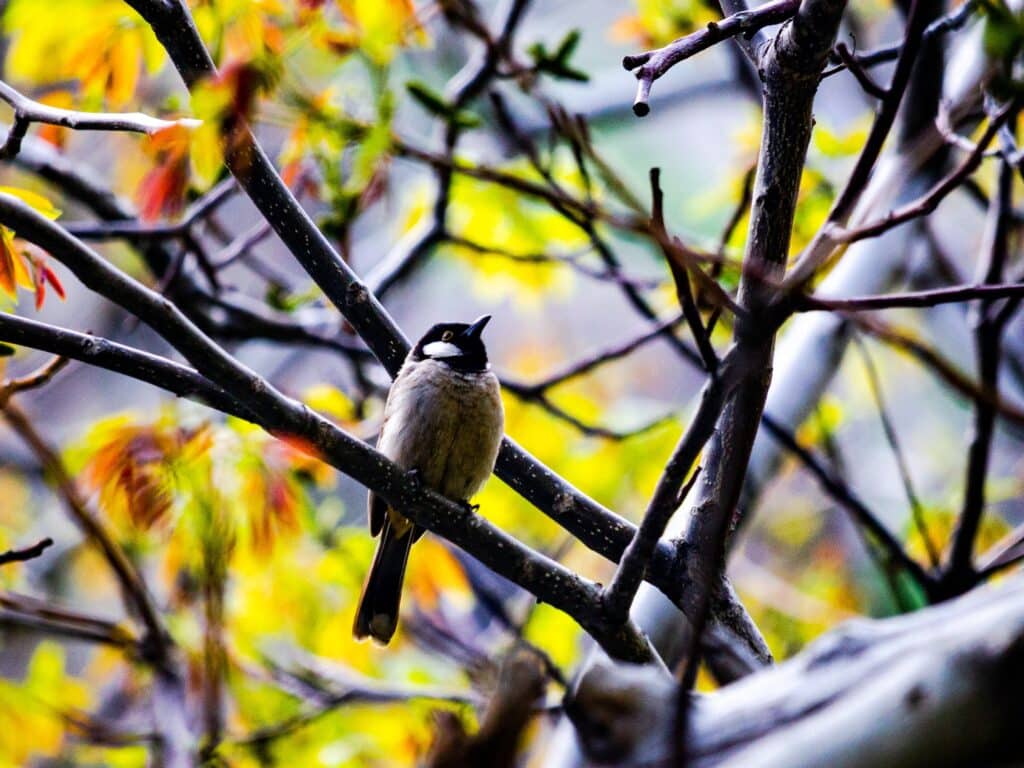
Darakeh, a mountainous valley near Tehran, stands out with its distinct features, setting it apart from other highland areas. The highest point in Darakeh is the majestic Shahneshin Peak, reaching an elevation of 3,800 meters. With an annual rainfall averaging 300 to 400 millimeters and an average temperature of 16 degrees Celsius, Darakeh boasts a cool climate for most of the year, making it a refreshing destination. Home to 21 types of local plants found exclusively in this region, Darakeh hosts various medicinal herbs. Rainwater collected in the area flows into the Darakeh River, contributing to the irrigation of orchards and compensating for Tehran’s water shortage.
Darakeh offers a delightful mountaineering route, adding to the joy of exploring this beautiful valley.
Essentials for Hiking in Darakeh
Before embarking on a journey to Darakeh, make sure to pack the following essential items:
- Backpack
- Insulated water flask
- Drinking water
- Season-appropriate clothing
- Sleeping mat
- Suitable hiking boots
- First aid kit
- Hat
- Hiking poles
- Snacks and lightweight food items
Darakeh River
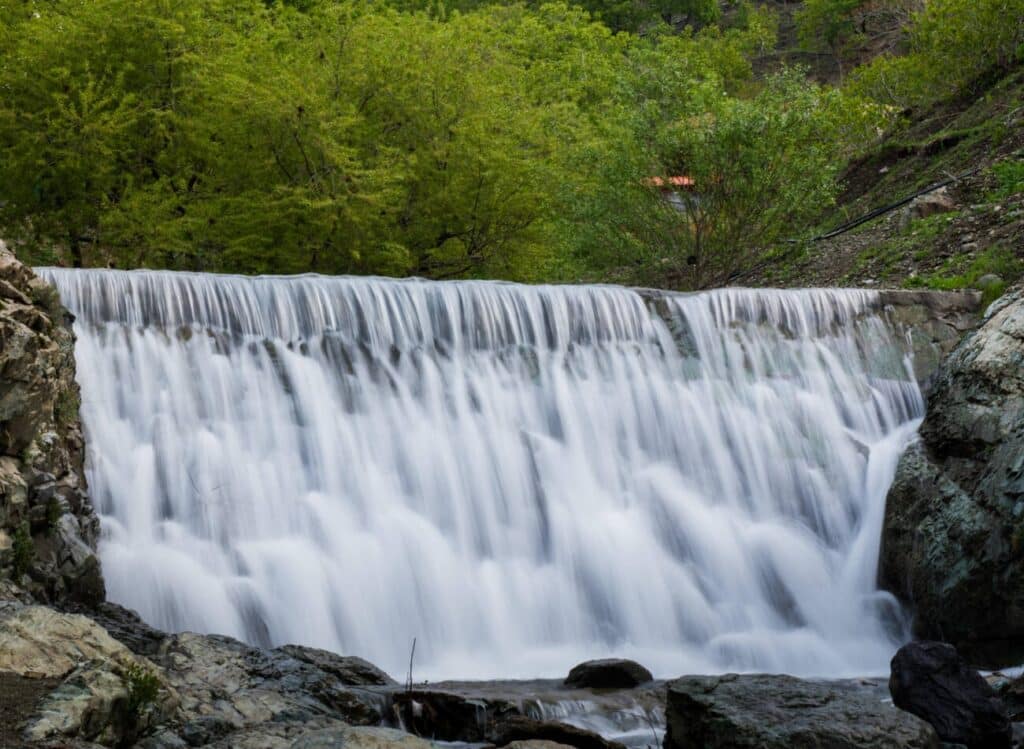
The Darakeh River, originating from the slopes of Shahneshin Peak and Tochal, flows through the eastern part of the region. It is considered one of the rivers surrounding Tehran. The main source of the river is the Seven Springs, with numerous other springs along its course. The river has a steep gradient, and during the spring season, its water flow is intense. Due to the swift flow and steep slopes, the river is devoid of fish and other living organisms. The picturesque river stretches approximately 15 kilometers, featuring notable attractions such as Band Abdullah Waterfall, Kara Waterfall, and Haft Hoz.
Kara Forest in Darakeh

A hidden gem in Darakeh, often unknown to many Tehran residents, is the Kara Forest. Located on the route towards Palangchal, reaching this forest requires a 40-minute hike along the Palangchal trail beside the river. Upon encountering the steep slope near the Kara cabin, a descent leads to the enchanting Kara Forest.
The Kara Forest is stunning throughout the year, but the autumn season unveils its true beauty. The orange hues of the forest’s trees captivate the observer’s eyes, creating a mesmerizing carpet of leaves. Witnessing the orange tapestry of the forest and the rustling sound of leaves in the autumn breeze is sure to alleviate fatigue and stress, doubling the pleasure of photography.
Palangchal Shelter
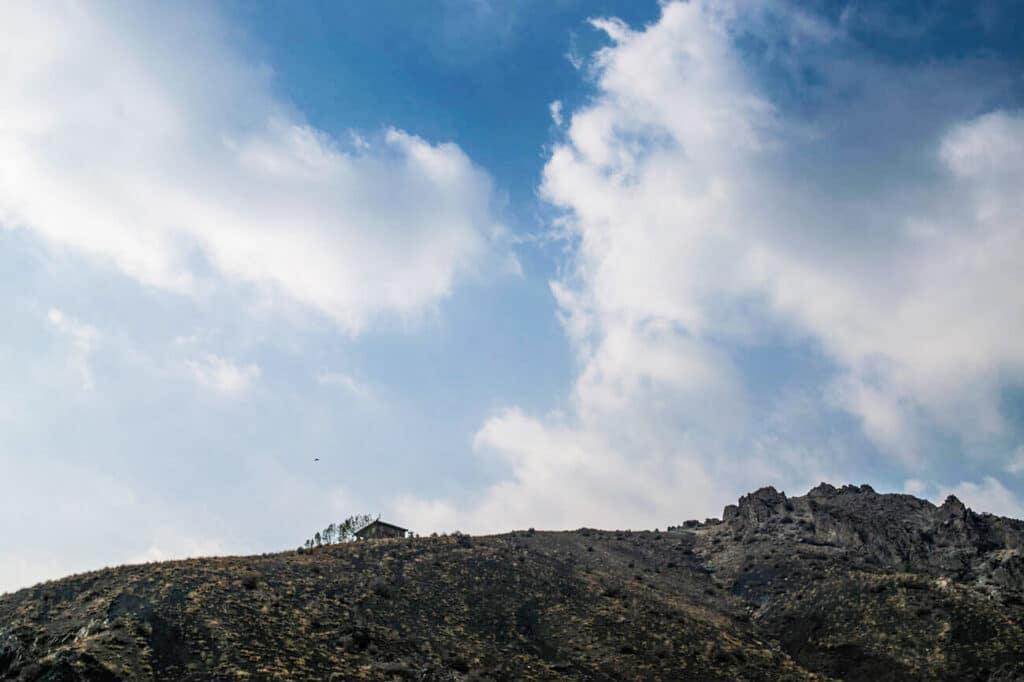
Palangchal Peak is considered one of the northern peaks of Tehran, and the Palangchal Shelter is situated on the ascent route to this peak. At an altitude of 2,450 meters above sea level, the shelter can accommodate up to 70 people. The distance from Darakeh Square to Palangchal Shelter is approximately 10 kilometers, equivalent to a two to three-hour hike, considering the slope of the trail.
Chin Kalagh Peak
Chin Kalagh, standing at an elevation of 2,820 meters, is one of the central Alborz peaks and the southernmost of the northern mountains of Tehran. Surrounded by Palangchal, Do Shakh Peaks, Imamzadeh Davood Valley, and Darakeh Valley, Chin Kalagh offers breathtaking views. Notable points of interest along the ascent route include Divaneh Dareh Waterfall, Do Sang Cave, Sang-e Neshin, Paradise Valley, Saadat Abad Stone Mine, Farahzad River, and Yonjeh Zar Road Coffee Shop. Abundant plant and animal species, along with flowing rivers and springs, add to the scenic beauty, especially in the spring season.
Best Seasons to Visit Darakeh
While Darakeh is beautiful throughout the year, spring and summer offer the most pleasant weather. Many travelers historically sought refuge in Darakeh during hot summer days. Spring in Darakeh is exceptionally beautiful and enjoyable. Summers are delightful, attracting numerous tourists, and autumn presents a unique and captivating face, especially in the Kara Forest. However, visiting Darakeh in winter, including late autumn, comes with severe cold and snow. If you plan a winter trip, ensure you have proper equipment, and consider traveling in groups.
Important Tips for Visiting Darakeh
Before heading to Darakeh, consider these important tips:
Darakeh can be crowded on weekends and holidays, so plan your visit on other days for a more serene experience.
Stick to designated hiking trails and avoid unmarked side paths without prior knowledge.
During cold and snowy seasons, travel with a professional group and ensure you have appropriate gear and clothing.
Be cautious of steep slopes on some trails, as they can be hazardous.
In winter, there is a risk of avalanches, so if visiting during this season, travel with a professional group and avoid paths prone to avalanches.
